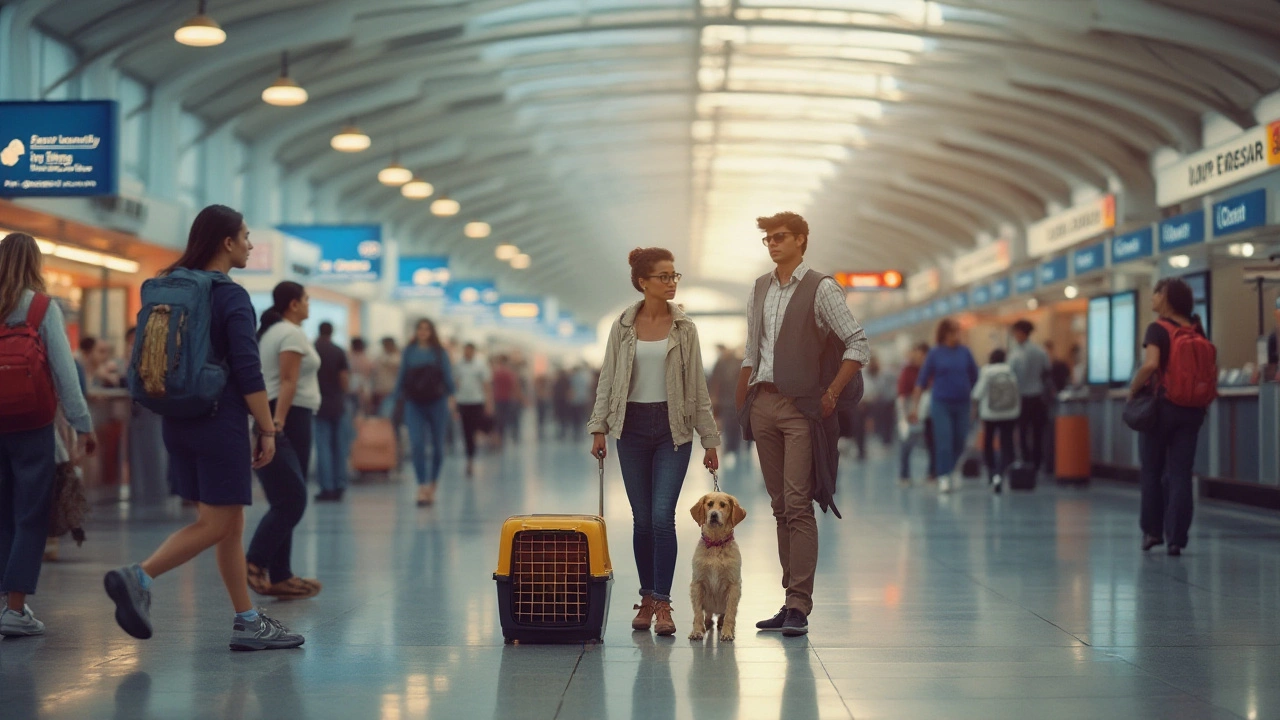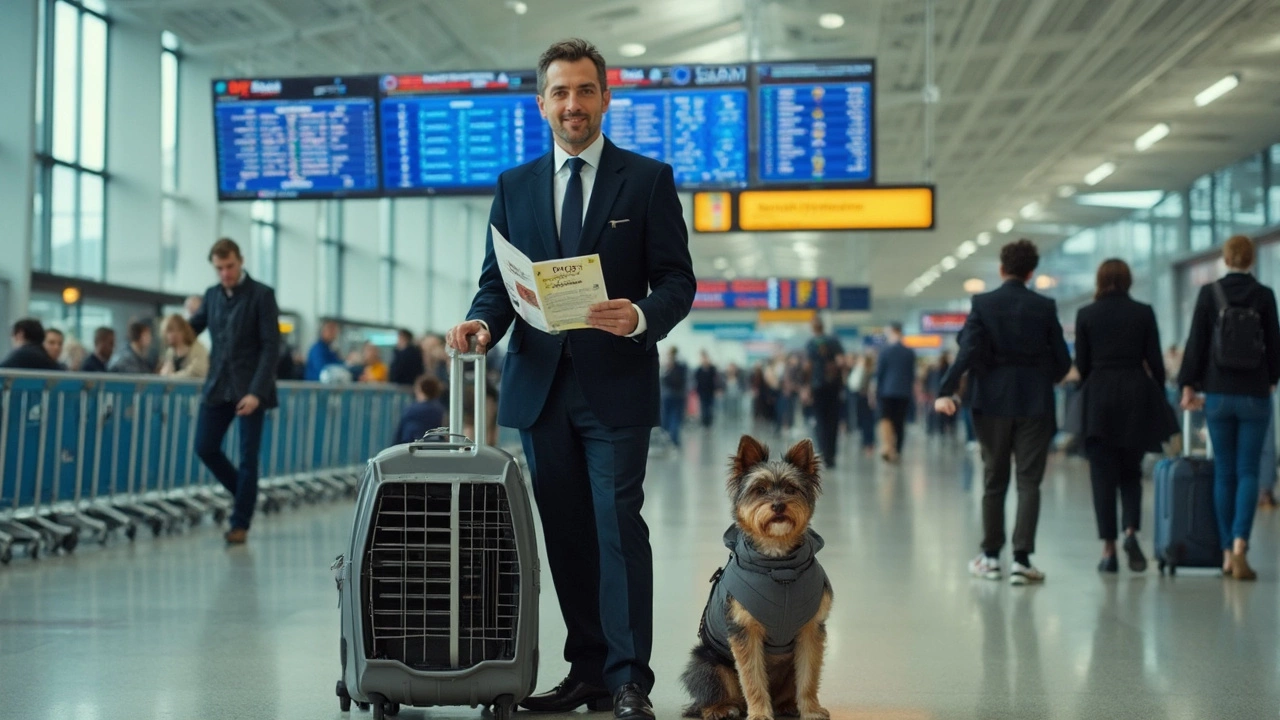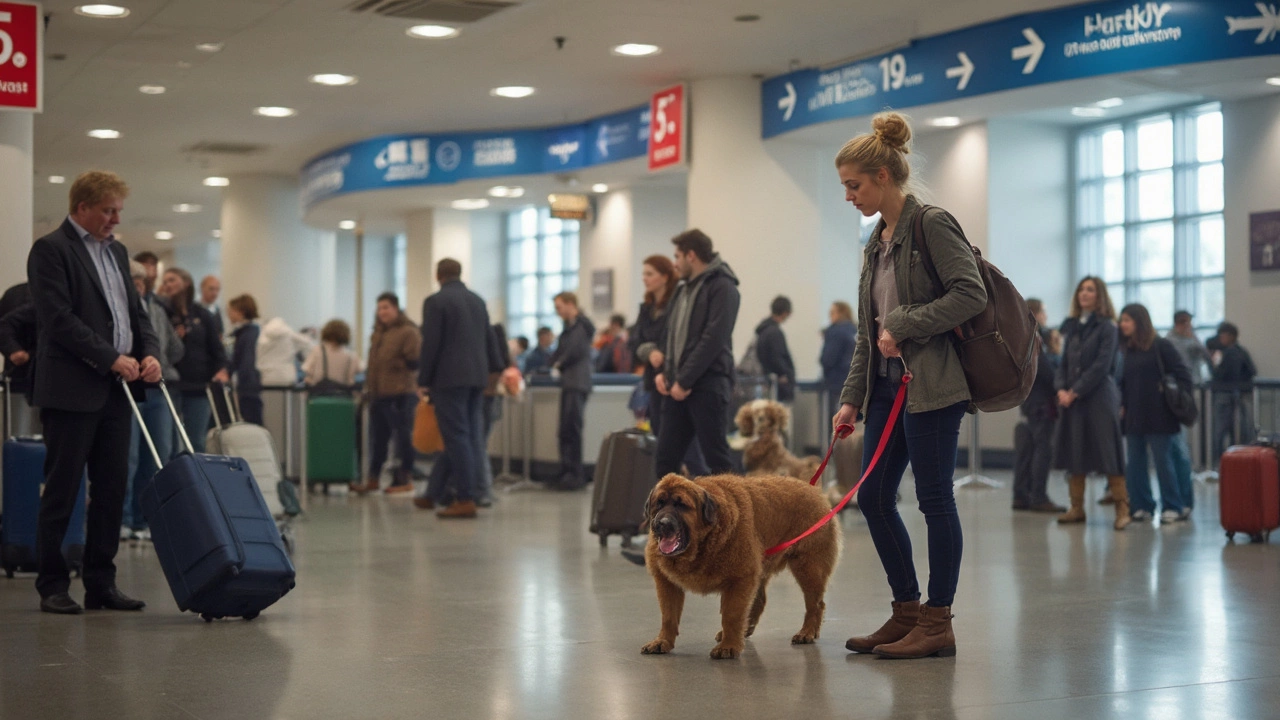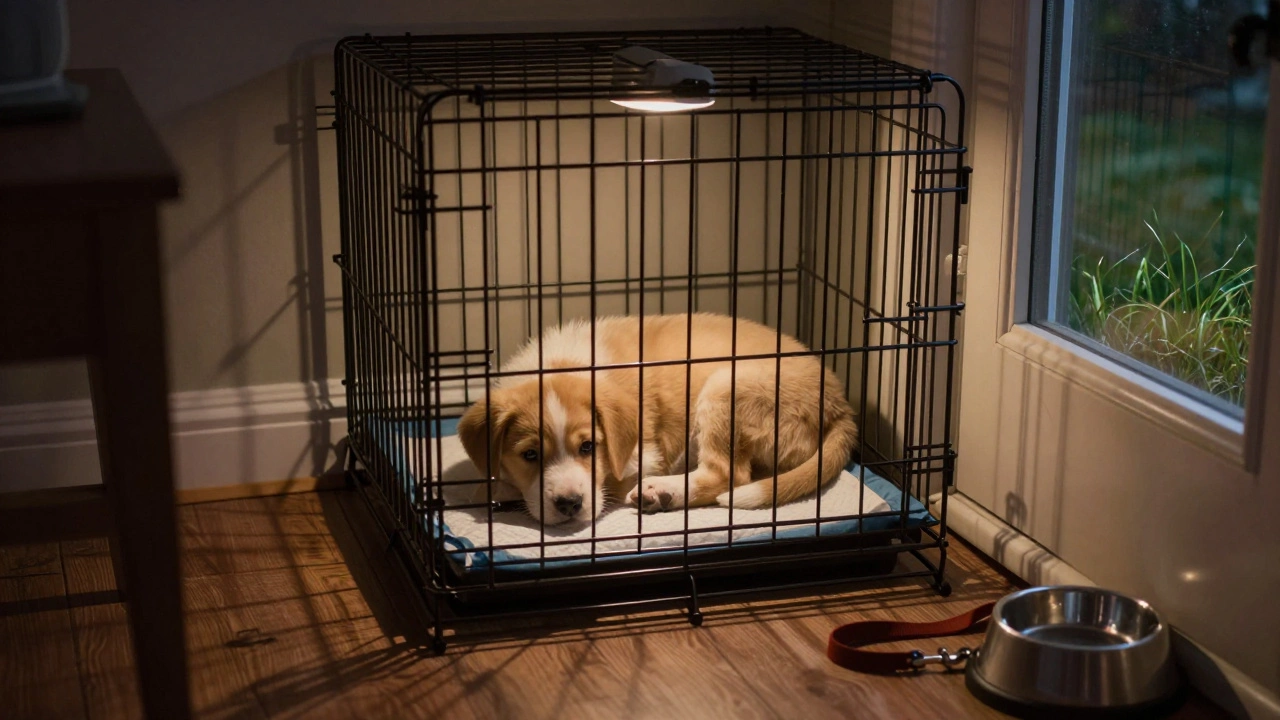Traveling with your dog can be both an exciting and daunting experience. As more pet owners opt to take their furry companions on flights, the question of whether a dog needs travel insurance becomes increasingly relevant. While not mandatory, having insurance for your canine pal may offer peace of mind and protection against unforeseen circumstances. In this article, we explore the world of pet travel insurance, how various airlines view it, and why it could be a crucial consideration for your next adventure.
Flying with pets presents unique challenges and some risks that are worth evaluating. From health concerns to travel mishaps, understanding the potential issues that might arise on a plane is important. Equipping yourself with knowledge about the types of insurance coverage available, along with some handy travel tips, can transform your trip into a more enjoyable experience for both you and your dog. Whether you're hopping on a short flight or embarking on a long-haul journey, making well-informed choices can keep tails wagging happily.
- Understanding Pet Travel Insurance
- Airline Policies and Requirements
- Assessing Risk Factors During Flight
- Types of Coverage Available
- Tips for Safe and Stress-Free Travel
- Making an Informed Decision
Understanding Pet Travel Insurance
When it comes to embarking on air journeys with your furry friend, the topic of pet travel insurance often stirs a myriad of questions. At its core, pet travel insurance is designed to safeguard against a range of unforeseen events, providing financial assistance in case of emergency. This could include coverage for accidents, illnesses, and sometimes even flight cancellations. It's crucial to understand what pet insurance entails to determine if it aligns with your travel needs, especially when your dog could be flying for the first time.
Insurance for traveling pets has grown out of the increasing number of owners opting for air travel with their beloved companions. This type of coverage is distinct from regular pet insurance that you may use for vet visits. It is tailored to address risks associated with travel such as sudden illness due to stress from flying or injuries that might occur in transit. Understanding these nuances is pivotal for making sound decisions about protecting your dog on the go. While airlines do their best to ensure safe transit, having an additional layer of insurance can help cover veterinary fees or medical emergencies.
Now, there is no one-size-fits-all insurance package, and offerings can vary significantly from one provider to another. When researching, it's essential to look at different policies closely. Some plans may cover only domestic travel, whereas others extend their coverage internationally. Moreover, certain policies might include liability coverage, which could be beneficial if your pet accidentally damages property during the trip. Evaluating these diverse options against your travel plans will go a long way in ensuring adequate protection for your furry travel companion.
"Pet insurance for travel is not just about protecting against the unexpected; it offers peace of mind. Knowing that you’re covered can significantly ease the stress of traveling with your pet," says Dr. Sarah Thompson, a renowned veterinarian with expertise in pet travel safety.
Traveling can sometimes be unpredictable, and even with the most meticulous planning, things can still go awry. It's the risks associated with these unknowns that pet travel insurance aims to mitigate. An interesting statistic from a recent survey shows that nearly 30% of pet owners who flew with their pets experienced delays, cancellations, or some unhappy accident. This highlights the importance of considering insurance pr. However, how do you navigate this landscape? A seasoned approach would be to compare multiple policies, check reviews, and perhaps even consult with fellow travelers or your vet.
With the ever-evolving landscape of air travel regulations, especially about flying with pets, it's vital to remain informed. Some countries have specific requirements that must be met for animal entry, and understanding these can prevent hassles and ensure you're prepared. Insurance can be part of this preparation, offering an extra cushion of safety amid rigorous travel schedules. Whether it’s your first time hopping on a flight with your dog or you're a seasoned traveler, the right pet travel insurance policy can make all the difference in crafting a smooth and worry-free adventure.
Airline Policies and Requirements
When preparing to fly with dogs, understanding each airline's specific policies and requirements is crucial to ensure a smooth journey. Airlines across the globe have distinct protocols about pet travel, shaped by factors like safety, animal welfare, and operational logistics. These policies generally cover aspects such as the dog's size, the acceptable carrier type, and where exactly on the plane your dog can travel—whether it's in the cabin with you or in the cargo hold. Knowing these details in advance can save you from unexpected hitches on travel day.
Most major airlines require pets to travel in IATA-approved carriers that fit under the seat in front of you. This requirement usually applies to dogs that are small in stature—generally under 20 pounds. For larger breeds, many carriers offer travel in the cargo area, a section specially designed to securely and comfortably transport animals. Understanding the differences between in-cabin and cargo transport is vital, as the environmental conditions in the cargo hold can be quite different from those experienced in the cabin. Pet travel safety is often bolstered by rules that differ depending on the country or region's regulations.
Nearly every airline mandates health certifications from a veterinarian issued within a specific timeframe prior to travel, often no more than 10 days. These documents assure the airline that your dog is fit to fly and free of any contagious diseases. Vaccination records are also commonly required, sometimes specifically for rabies. When traveling internationally, additional documentation such as microchip information or an import permit might be necessary. It’s advisable to check these requirements well in advance, as some countries have stringent quarantine laws for pets from other regions. This can particularly affect your planning for return trips if you are traveling abroad.
Booking in advance is another key tip. Since airlines have limited spaces for animals, they operate on a first-come, first-served basis. Securing a spot as soon as you book your flight is essential to ensure your dog can accompany you on your chosen dates. Some carriers charge additional fees for flying with pets, which can vary widely between different airlines. It's worth noting that these fees are separate from your ticket and might not get refunded if plans change, so double-checking all charges ahead of time can avoid budget surprises.
More airlines are starting to offer specific travel classes for pets, reflecting a rising demand for safe and comfortable flying with pets. According to a report by the International Air Transport Association, about 2.5 million live animals are transported by air every year. With such a significant number, airlines continually refine their policies to enhance both animal safety and customer satisfaction. If you're looking for quotes or more detailed information, sources like the American Veterinary Medical Association often offer helpful advice on preparing pets for air travel.
"Ensuring comfort and safety for traveling pets is a responsibility that airlines take seriously," says Laura Decker, spokesperson for a leading airline. "We advise all pet owners to become familiar with our requirements to make their journey as smooth as possible."
Employing these details and insights about airline policies can transform your pet’s flight into a stress-free experience. Always make sure to familiarize yourself with the specific airline requirements you're flying with. This way, you can ensure compliance and secure a safe trip for your beloved furry companion.

Assessing Risk Factors During Flight
Flying with a dog introduces a set of unique challenges and potential risks that every pet owner should consider seriously. The confined space, changes in air pressure, and exposure to new environments can all impact your canine companion's well-being. Knowing these risks is crucial to ensure a safe journey. One common concern is the stress levels experienced by animals during flights, which can manifest in various physical and behavioral symptoms. This is particularly important if your pet is unused to travel, as their anxiety levels might spike while the plane ascends or descends. Moreover, dehydration is another risk factor because the airline cabin's low humidity can quickly lead to your dog becoming thirsty, thereby affecting their comfort and health during the journey.
Another aspect to consider is the physical well-being of your pet during transit. Temperature fluctuations within cargo holds can pose significant health risks, especially in cases where pets are transported as checked baggage. Not all airlines provide climate-controlled conditions, potentially putting your furry friend at risk of hypothermia or heatstroke, depending on the ambient temperature outside. Certain breeds, particularly brachycephalic or snub-nosed breeds, are particularly susceptible to respiratory issues at high altitudes. A detailed understanding of these breed-specific vulnerabilities can help mitigate potential problems during flights. Additionally, navigating through crowded airports and the inevitable waiting times can also contribute to your pet's stress levels. Having a plan to handle such situations can ease both yours and your pet's journey.
In recent years, airlines have improved regulations to ensure the safety and comfort of traveling pets, but discrepancies exist between different carriers. Thus, familiarizing yourself with your chosen airline's policies is a step you simply cannot skip. Consider the example of Delta Airlines, which requires health certification no older than 10 days for pets traveling as cargo. This ensures that animals are fit to fly and reduces the risk of health emergencies during the journey. Additionally, some airlines impose restrictions on pet travel during certain months, mindful of the temperature extremes typical in these periods. This necessitates planning your travel dates carefully to prevent unnecessary discomfort and risk to your dog. In some fortunate instances, pet owners might find reassurance in the words of experts. According to a report from The International Air Transport Association, "Taking the necessary precautions and understanding airline regulations can significantly enhance the safety and comfort of pet travel, ensuring peace of mind for pet owners worldwide."
Types of Coverage Available
When it comes to ensuring safe and comfortable air travel for your dog, understanding the different types of insurance coverage available is fundamental. Pet travel insurance isn't one-size-fits-all, and various policies cater to distinct needs and circumstances. Coverage typically falls into several categories, each designed to address specific aspects of traveling with pets. Firstly, there’s trip cancellation or interruption coverage, which typically reimburses expenses if you need to cancel your trip due to your dog's illness or if your pet falls ill during the trip, preventing continuation. Such policies can be lifesaving when unexpected health issues arise, giving pet owners peace of mind and financial protection.
Another vital type of coverage is medical insurance for your pet during the travel period. This covers expenses should your dog need medical attention while away from home. Dogs can sometimes face health challenges due to stress from flying or changes in the environment, and having medical coverage ensures that they receive necessary care without prohibitive costs. Thirdly, many insurers offer coverage for accidents or injuries that might occur in transit. Mishaps during loading, unloading, or turbulence can pose risks, and knowing your pet travel arrangements include safety nets for such events can significantly ease travel anxiety.
"Traveling with pets is as safe as their insurance," says Lisa Peterson, a travel expert with decades of experience in pet-oriented trips. She highlights that unexpected situations can arise at any time, emphasizing the importance of comprehensive coverage.In addition to these, some policies extend to loss or theft of your pet while traveling. This type of coverage might also encapsulate advertising costs if your pet goes missing and rewards for recovery. Let's not forget about liability insurance, which protects pet owners in case their dog causes harm or damage during their travel. This is particularly crucial on flights, where close quarters with other passengers require heightened awareness and responsibility.
For those traveling internationally, it's wise to consider coverage that accounts for quarantine expenses and compliance with import regulations of the destination country. Many countries have strict rules governing the entry of animals, and insurance may help cover costs associated with any delays or additional protective measures. Comparing providers and scrutinizing policy details can highlight these features, allowing dog owners to tailor their choice to both domestic and international travel needs. Look for plans where specific scenarios like kennel fees for delayed flights, missing baggage containing pet essentials, and related accommodations are accounted for, ensuring every potential hiccup is considered.
Flying with pets can be a delightful journey with the right protections in place. Ignite your pet’s wanderlust and your own by equipping yourself with the best coverage, making the trip a shared adventure without unnecessary worries. Today's market offers a spread of options, so it’s crucial to evaluate what each plan covers and the extent. Carefully choosing a plan that includes robust features suitable for your travel agenda is integral. After all, knowing you have the right coverage can separate a worrisome trip from a worry-free one.
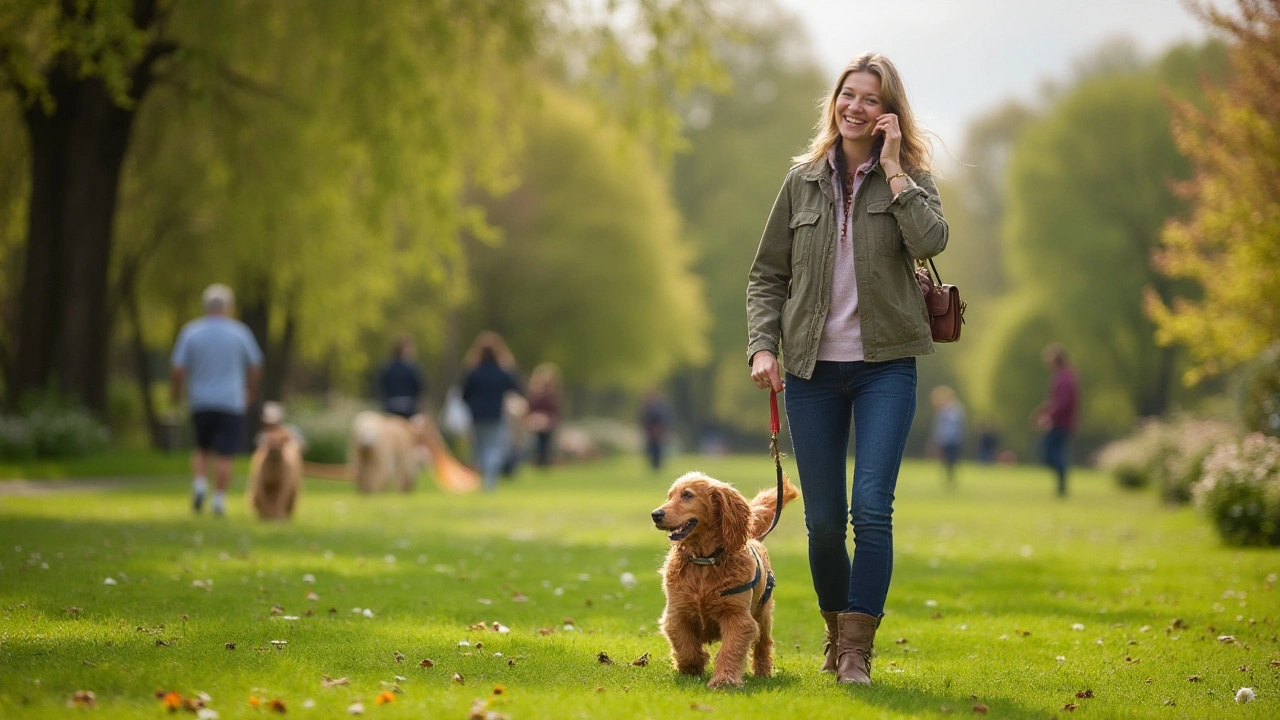
Tips for Safe and Stress-Free Travel
Preparing for air travel with your furry friend involves more than just buying a ticket. It’s about ensuring that the entire journey is as smooth and comfortable as possible for both you and your dog. Start with choosing the right pet travel carrier that meets airline standards. This will not only ensure compliance with airline policies but also provide a cozy nook for your dog during the flight. Make sure your dog is familiar with the carrier by spending some time getting used to it, which can significantly reduce stress during the actual trip. Consider using their favorite blanket or toy inside the carrier to create a familiar environment that can soothe anxiety.
Ensuring your canine companion's comfort also means paying attention to their pre-flight routine. Before heading to the airport, take your dog on a long walk. This will help them expend some energy, thus making it easier for them to stay calm during the flight. Feeding your dog a light meal up to four hours before departure enables proper digestion and helps avoid airsickness. Hydration is crucial, so provide them with enough water, but not too much to avoid frequent bathroom needs.
A visit to the vet should be on your checklist before any flight. A quick health check ensures your dog is fit to fly, and you can discuss any sedatives or calming supplements with the vet, especially if you know your dog is a nervous traveler. Flying with any existing health issues can complicate matters, so professional advice is paramount. The vet can also give you insights on any vaccinations or health certificates that might be required depending on your destination.
While packing for your trip, don’t forget to include essentials for your dog. This includes copies of vaccination records, medication if necessary, and any special foods or dietary supplements. Remember, airports can be bustling and chaotic places that might severely stress sensitive pets. Find a quiet corner with minimal traffic in the terminal and allow your dog to decompress before boarding. Once on the plane, keep checking on your dog, but avoid taking them out of their carrier, unless necessary, to maintain a stable, safe environment.
If your travel plans involve a layover, make sure the layover airport is pet-friendly, offering relief areas where your pet can stretch, move around, and relieve itself if needed. Look for airports with specific pet zones, which can provide a much-needed break from the monotony of being inside a carrier. This is especially important during longer multi-stop flights as much like humans, dogs also need these periodic breaks.
Lastly, consider adding travel insurance to your checklist, not just for luggage, but also your pet. Pet insurance covering travel-related issues can provide support if a health emergency arises mid-flight. With careful planning and thoughtful preparation, you can ensure that flying is not a daunting experience for your dog. Sometimes, it’s the little details that make the biggest difference in ensuring that both you and your pet have a memorable travel experience. By following these tips, you contribute to making air travel less intimidating and more enjoyable for your four-legged travel buddy.
Making an Informed Decision
When debating whether or not to purchase travel insurance for your furry friend, it's vital to carefully weigh the benefits and risks associated with both choices. Consider your dog's specific needs and the nature of your travel plans, as these factors play a crucial role in the decision-making process. Researching airlines' pet travel regulations is an excellent start. Some airlines have rigorous guidelines and might even require a form of insurance or health assessment prior to boarding. Knowing these details ahead of time helps you avoid unpleasant surprises that could have a major impact on your travel.
Investigating the different types of dog insurance available for flights is indispensable. Policies can range widely, from basic accident coverage to more comprehensive packages that include health insurance and trip cancellations. Determine what level of coverage offers the most value for you and your pup. Some pet owners opt for specialized insurance policies that cater specifically to flying with pets, ensuring their furry family members are not subjected to unnecessary risks. Ask yourself, how much would peace of mind be worth compared to the cost of the policy?
Price shouldn't be the only factor to consider when selecting a policy for pet travel insurance. Examine the credibility and reliability of the insurance provider. Read reviews from other pet owners, gather feedback, and seek recommendations. Engaging with communities or forums dedicated to traveling with dogs might present anecdotal experiences and real-life examples that can inform your decision. Don't underestimate this wealth of insight provided by a network of passionate pet owners who have experienced the highs and lows of traveling with their beloved pets.
Another valuable course of action is to consult your veterinarian prior to booking your flight. Veterinary professionals can conduct a thorough examination, ensuring your dog is physically capable of handling the stresses of air travel. Moreover, a vet might highlight health risks that can affect your decision to fly with or without insurance. For example, certain breeds are more susceptible to flight-related stress and anxiety, making flights potentially hazardous without proper preparation and insurance coverage.
"Pet owners should balance unforeseen risks and their financial impact with an insurance policy that offers immediate benefits during travel," advises Dr. Lisa Reynolds, a renowned animal travel specialist. "By taking proactive steps, owners can help secure a safe and enjoyable journey bereft of complications."
Simplifying the entire process of making an informed decision about travel insurance can be realized through a practical approach: allocate ample time to research and root your decision-making in solid facts. It’s easy to underestimate the significance of intricate details, but addressing them now saves you from encountering distress both emotionally and financially during your travels. Embracing knowledge, preparedness, and a touch of intuition will be your most trustworthy allies as you chart your next adventure with your pet.

